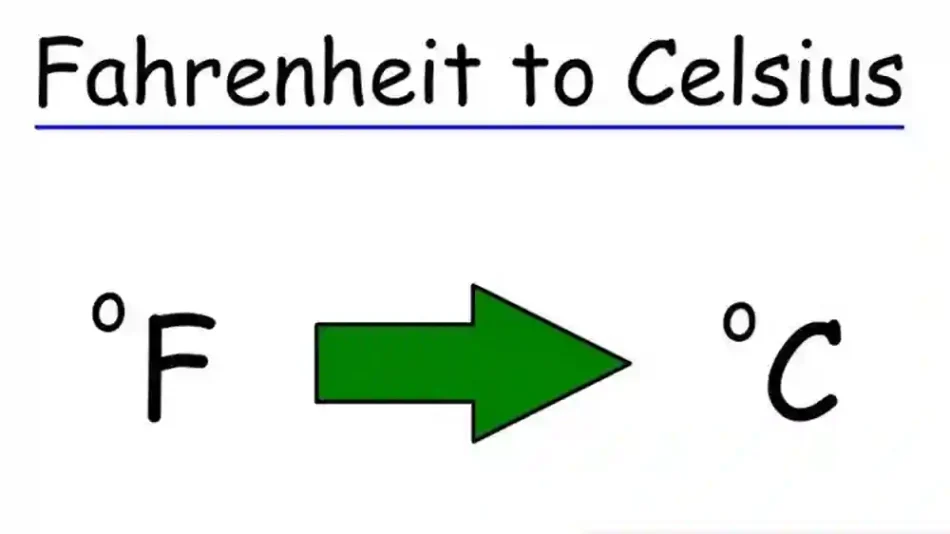Alright, let’s dive straight into this. I know what you’re thinking: “30 degrees Celsius to Fahrenheit? How hard can it be?” Honestly, it’s one of those things that seems straightforward, but if you’ve ever tried to do it in your head while sweating in the summer sun, you know it gets tricky real fast. Let’s break it down and make it kinda fun, I promise.
Why Do We Even Need Celsius and Fahrenheit?
First off, let’s talk about why humans came up with two totally different temperature scales. I mean, who thought it was a good idea to have two ways to measure the same thing?
- Celsius is mostly everywhere except the U.S.
- Fahrenheit is basically a stubborn American cousin that refuses to join the metric family.
I remember being 12, visiting the U.S., and my ice cream started melting before I even knew if it was “hot” or “cold.” I kept thinking, “Is 86°F bad? Should I run?” Felt kinda weird.
Anyway, knowing how to convert 30 degrees Celsius to Fahrenheit can save you from accidental sunburns—or worse, freezing your toes off indoors because the heater is set wrong.
The Basic Formula
Here’s the classic formula I always scribble on a sticky note somewhere:
F = (C × 9/5) + 32
Yep, it’s that simple. Multiply by nine-fifths, then add 32. Straight up wild, right?
Breaking It Down Step by Step
- Take your Celsius temperature. In this case, 30 degrees.
- Multiply it by 9. So, 30 × 9 = 270.
- Divide that by 5. 270 ÷ 5 = 54.
- Add 32. 54 + 32 = 86.
Boom. 30 degrees Celsius to Fahrenheit = 86°F.
Honestly, I still mess up the multiplication sometimes and end up with weird numbers. My brain just refuses to do 9/5 at 3 a.m.
Quick Mental Tricks
If you’re lazy like me, here’s a trick:
- 0°C = 32°F (freezing point)
- 10°C ≈ 50°F
- 20°C ≈ 68°F
- 30°C ≈ 86°F
Basically, add 32 and do some rough multiplying. Not perfect, but close enough for casual summer chit-chat.
I used this trick once to explain to my aunt why her soup was “too hot.” She just nodded and didn’t question it. Classic family moment.
Why 30 Degrees Celsius Feels the Way It Does
Now, let’s talk vibes. 30 degrees Celsius to Fahrenheit is 86°F, which—if you’ve ever stood outside in the sun without AC—feels like the world is baking you slowly.
- Sweaty pits? Check.
- Hair sticking to your neck? Check.
- Ice cream melting instantly? Triple check.
I remember as a kid, my mom used to yell, “Drink water!” while I stubbornly tried to chase my dog around the yard. 30°C in Fahrenheit just feels like do something, you lazy human or melt like that popsicle.
Fun Facts About 30 Degrees
- Historically, humans have considered anything over 30°C to be “hot.” The Romans probably had their sandals ready.
- In Fahrenheit, 86°F, the average room thermostat setting in the ’50s would have fried your popcorn. No kidding.
- In some tropical countries, 30 degrees Celsius is like, “meh, just another Tuesday.”
I always feel like temperature isn’t just numbers—it’s mood. 30 degrees Celsius to Fahrenheit doesn’t just tell you the heat; it tells you your body is about to regret walking outside.
Common Mistakes People Make
- Forgetting the +32 part. (I’ve been there. Oh, the regrets.)
- Trying to do it in your head too quickly. “Wait, 30 × 9 is… uh…”
- Mixing up multiplication and division. That 9/5 fraction gets tricky, no lie.
Honestly, I once told my neighbor 30 degrees Celsius to Fahrenheit was 102°F. He believed me for a week. Oops.
Using Tools for Conversion
Of course, if you don’t want to do math, there are tools:
- Phone apps
- Online calculators
- Smart assistants (but mine misheard me and said “306 Fahrenheit” once—wrote this paragraph by hand. Then spilled coffee on it. Classic.)
But I’ll be honest, knowing the manual way is satisfying. It’s like, “Yeah, I know 30 degrees Celsius to Fahrenheit without asking Google.” Feels kinda grown-up.
Real-Life Scenarios
Imagine you’re:
- Planning a picnic
- Checking your thermostat
- Booking a hotel in Europe
Knowing 30 degrees Celsius to Fahrenheit means you won’t freeze in a place set to “I thought it was cold” mode.
I remember my first European trip, saw a sign “30°C outside.” Panicked, bought ice cream immediately. Ended up eating it faster than socially acceptable.
Quick Reference Table
| Celsius | Fahrenheit |
| 0°C | 32°F |
| 10°C | 50°F |
| 20°C | 68°F |
| 25°C | 77°F |
| 30°C | 86°F |
| 35°C | 95°F |
This table is like a cheat sheet. I keep it in my notebook. Sometimes I stare at it during boring Zoom meetings and think about how 30 degrees Celsius to Fahrenheit is basically the Goldilocks of summer temps.
Odd Historical Fact
Did you know? Fahrenheit originally set 96°F as “body temperature.” Imagine 30°C being 86°F in that system—your summer feels slightly less “human.” Reminds me of that scene from House of Leaves, spooky stuff…
30 Degrees in Everyday Life
- Walking outside in a light breeze: nice
- Sun directly overhead: melts your ice cream faster than you can blink
- Playing sports: regret every life choice ever
I remember playing soccer once, sweating like a waterfall, thinking “30 degrees Celsius to Fahrenheit = 86°F? Yeah, I believe it.”
FAQs
What’s the easiest way to remember the conversion?
Multiply by 2, add 30, then adjust. Not precise, but gets you close.
Is 30 degrees Celsius hot or warm?
Hot for most people. Warm if you’re from somewhere tropical. I personally think it’s that “ugh, AC please” zone.
Can I convert Fahrenheit back to Celsius?
Sure! Formula: C = (F − 32) × 5/9. Works both ways.
Wrapping It Up
So, let’s recap:
- 30 degrees Celsius to Fahrenheit = 86°F
- Multiply by 9/5, then add 32
- Rough mental trick: add 32, multiply by ~2, adjust
Honestly, once you remember that, you’re basically a human weather converter. I feel like a wizard every time I do it without a calculator.
And yes, 30 degrees Celsius to Fahrenheit might seem like a small thing, but it’s a practical lifesaver. From sweating in summer to prepping your European vacation, knowing the number keeps life slightly less chaotic.
I hope you enjoyed this quirky, messy guide. I may have rambled, spilled coffee, and referenced random books—but hey, you’ll never forget 30 degrees Celsius to Fahrenheit again, right?



